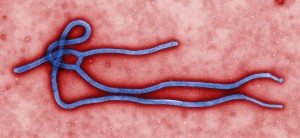Half the states — including Georgia — scored a 5 or lower on 10 key indicators for preventing, detecting and responding to disease outbreaks, according to a new report.
The response to Ebola was a central theme in the report by the Trust for America’s Health and the Robert Wood Johnson Foundation.
The Ebola crisis in the United States this year showed that “some of the most basic infectious disease controls failed when tested,” Jeffrey Levi, executive director of the Trust for America’s Health, said in a statement Thursday.
“The Ebola outbreak is a reminder that we cannot afford to let our guard down,’’ Levi said. “We must remain vigilant in preventing and controlling emerging threats … but not at the expense of ongoing, highly disruptive and dangerous diseases – seasonal flu, HIV/AIDS, antibiotic resistance and health-care-associated infections.”
Ebola, which has devastated West Africa, spread for the first time outside that region this year.
In early autumn, a Texas hospital initially failed to diagnose the disease in a new arrival from West Africa. When he was eventually admitted, he was fatally ill and highly contagious. Two nurses attending to him caught the virus, raising fears nationwide, but the nurses recovered after treatment.
Georgia has responded quickly to Ebola, public health officials say. The state is assembling a tiered system among the state’s hospitals for identifying and treating Ebola patients. And Emory University Hospital in Atlanta has successfully treated four Ebola patients.
The report on outbreaks, though, appeared as the CDC said Georgia had an extremely high level of flu.
The state scored 5 of 10 indicators in the report. It achieved goals for increasing or maintaining public health funding; having a high rate of early childhood vaccinations; and reducing the number of health-care-acquired infections involving a “central line’’ catheter.
Georgia also was cited favorably for public health lab preparation for emerging disease threats; and reporting of HIV data to a state surveillance program.
The categories where Georgia didn’t score a point included flu vaccination rates; completing climate change adaptation plans; and prompt testing of suspected E. coli cases.
No state achieved a score of 10. Maryland, Massachusetts, Tennessee, Vermont and Virginia tied for the top score with 8 out of 10 indicators. Arkansas had the lowest score at 2 out of 10.
The indicators are developed with public health experts based on data from publicly available sources or information provided by public officials.
The report also found that:
** Significant advances have been made in preparing for public health emergencies since the Sept. 11, 2001 and the anthrax attacks, but gaps remain and have been exacerbated as resources were cut over time.
** More than 2 million preschoolers, 35 percent of seniors and a majority of adults do not receive all recommended vaccinations.
** While health-care-associated infections have declined in recent years, about one out of every 25 people hospitalized each year still contract such an infection.
** The number of new HIV infections grew by 22 percent among young gay men, and 48 percent among young black men.
** About 48 million Americans suffer from a foodborne illness each year.
Public health preparedness relies to a large extent on funding, experts say.
The nation increased public health funding after the 2001 terrorist attacks, only to slash that funding since the economic downturn of the past few years, USA Today reported, adding that the CDC’s budget shrank by 10 percent — nearly $1 billion — from 2012 to 2013.
In response to Ebola, though, Congress approved more than $6 billion in emergency funding.


